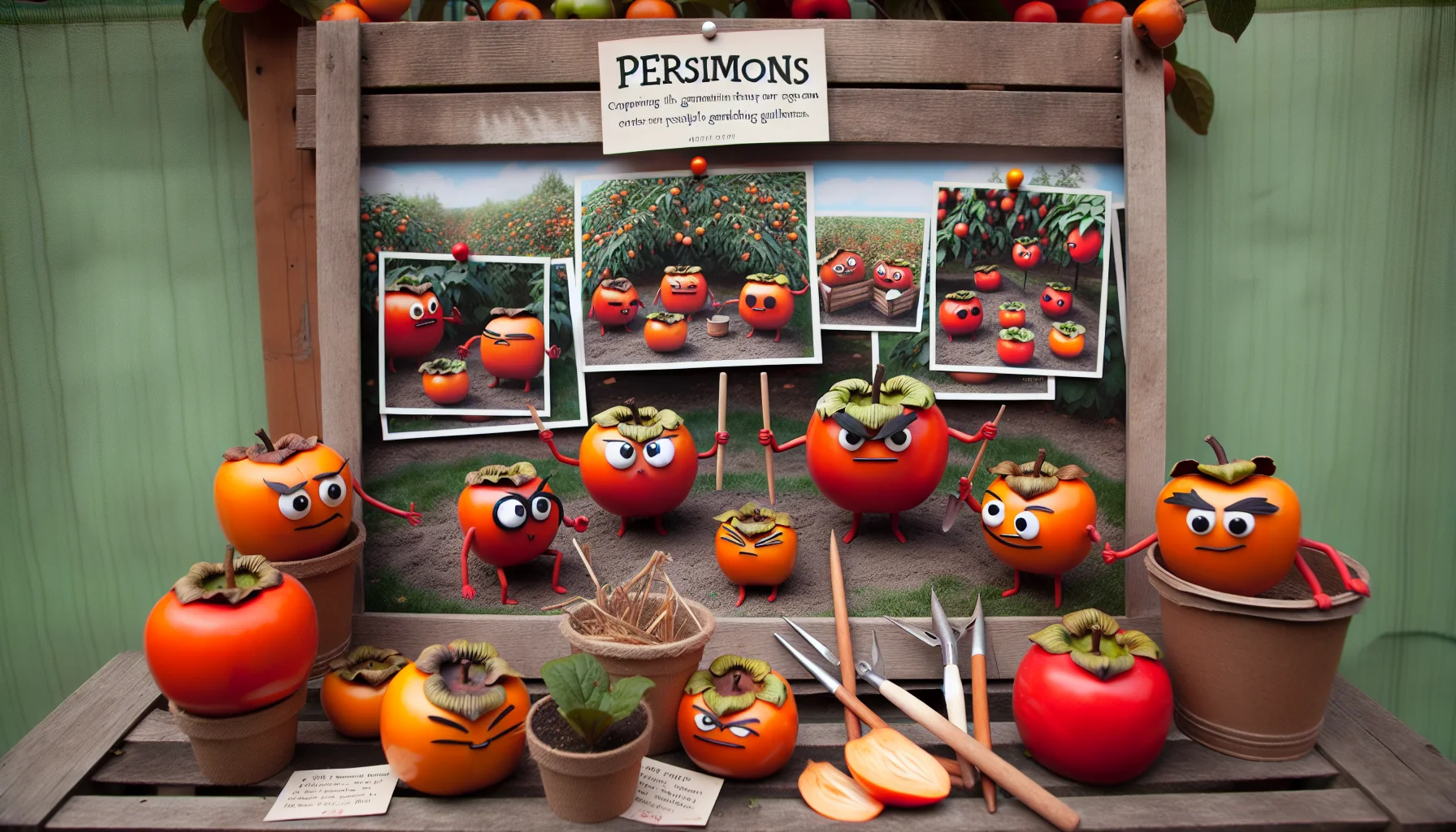Types of persimmons Quiz
Test Your Knowledge
Question of
Understanding Persimmons: A Guide to Different Types
Persimmons are a fascinating and diverse group of fruits that have captured the interest of gardeners and food enthusiasts alike. With their rich history and variety, persimmons offer a wide range of flavors, textures, and uses that can add incredible depth to both culinary and gardening endeavors. From the astringent varieties that require patience and precise timing to enjoy, to the non-astringent types that can be eaten right off the tree, understanding persimmons is key to fully appreciating what these fruits can offer. This guide aims to explore the different types of persimmons, shedding light on their unique characteristics and how they can enhance your gardening and culinary experiences.
The Origins of Persimmons
Persimmons, known scientifically as Diospyros kaki, are a fruit that has a rich history intertwined with various cultures around the globe. The origins of persimmons trace back to China, where they have been cultivated for over 2000 years. This fruit was highly esteemed in Chinese culture, not just for its sweet, honey-like taste but also for its medicinal properties. From China, the cultivation of persimmons spread to Korea and Japan, where they also became an integral part of the local cuisine and culture. In Japan, persimmons are called "kaki," and they are often associated with the arrival of autumn. The fruit was introduced to the Western world in the 19th century, where it has slowly gained popularity. Today, persimmons are grown in various parts of the world, including Southern Europe, the Middle East, and the Americas. Each region has developed its own varieties and ways of incorporating this versatile fruit into their diets. Persimmons are not just a culinary delight; they are also celebrated in festivals and artistic representations, showcasing their importance beyond just a food source. The journey of persimmons from ancient China to global recognition is a testament to their enduring appeal and versatility.
Main Types of Persimmons
- Fuyu: This type of persimmon is squat and somewhat resembles a tomato in shape. It is sweet and can be eaten like an apple, even when it's firm.
- Hachiya: This variety is acorn-shaped and is known for its astringent quality when unripe. It becomes sweet and jelly-like as it ripens.
- American Persimmon (Diospyros virginiana): Native to the eastern United States, this persimmon is smaller than its Asian cousins and has a rich, honey-like flavor when fully ripe.
- Chocolate Persimmon: Named for its brownish flesh, the Chocolate Persimmon offers a sweet, slightly nutty flavor. It's best eaten when soft.
- Tanenashi: This variety is cone-shaped and has a smooth, seedless flesh when ripe. It is commonly used in traditional Asian desserts.
Cultivating Persimmons: Tips for Gardeners
Persimmons are a delightful addition to any garden, offering not only delicious fruit but also a beautiful aesthetic with their bright, orange color. To successfully grow persimmons, it's crucial to understand their specific needs. Firstly, persimmons thrive in well-draining soil with a neutral to slightly acidic pH. Before planting, incorporate plenty of organic matter to enrich the soil and ensure good drainage. Climate-wise, persimmons are quite adaptable but prefer a temperate climate with mild winters; they can tolerate temperatures down to about -12°C (10°F) once established. When it comes to care, regular watering is essential during the growing season, especially for younger trees. However, be careful not to overwater, as this can lead to root rot. Mulching around the base can help retain moisture and regulate soil temperature. Pruning should be done in late winter to remove any dead or crossing branches and to maintain a manageable shape. With the right conditions and care, your persimmon trees will reward you with bountiful harvests for years to come.
Harvesting and Storing Persimmons
Persimmons are a unique and delicious fruit that require specific conditions for optimal harvesting and storage. The best time to harvest persimmons is when they are fully colored but still firm to the touch. It’s crucial to use pruning shears or scissors to cut the fruit from the tree, leaving a few inches of the stem attached, to avoid damaging the delicate skin. For storing persimmons, keep them at room temperature until they reach your desired level of ripeness. Once ripe, persimmons can be stored in the refrigerator to extend their freshness. If you have a large harvest, consider wrapping individual fruits in paper and placing them in a ventilated container to prevent them from touching, as this can lead to bruising and spoilage. Following these tips will help ensure your persimmons remain delicious and fresh for as long as possible.
Health Benefits of Persimmons
- Rich in Nutrients: Persimmons are a great source of vitamins A and C, which are essential for immune function, skin health, and vision.
- High in Fiber: The fruit is high in dietary fiber, which aids in digestion and helps in maintaining a healthy weight.
- Contains Beneficial Plant Compounds: Persimmons are loaded with antioxidants and anti-inflammatory compounds, which can help reduce the risk of chronic diseases.
- May Improve Heart Health: The fiber, antioxidants, and flavonoids in persimmons can contribute to heart health by lowering blood pressure and cholesterol levels.
- Supports Healthy Vision: The high levels of vitamin A and antioxidants like lutein and zeaxanthin in persimmons are beneficial for eye health and can protect against age-related eye diseases.
- May Help Reduce Inflammation: The anti-inflammatory properties of persimmons can help lower the risk of various inflammatory conditions.
- Supports Immune Function: With its excellent vitamin C content, persimmons can help support the immune system, aiding in the prevention of common illnesses.
Persimmon Recipes for Gardeners
| Recipe Name | Ingredients | Preparation Steps |
|---|---|---|
| Persimmon Pudding | Persimmons, sugar, flour, milk, eggs, baking powder | Puree persimmons, mix with other ingredients, bake at 350°F for about 60 minutes. |
| Persimmon Salad | Mixed greens, persimmon, walnuts, feta cheese, balsamic vinaigrette | Combine ingredients in a bowl, drizzle with vinaigrette, toss gently. |
| Persimmon Smoothie | Persimmon, banana, Greek yogurt, honey, milk | Blend all ingredients until smooth, serve immediately. |












